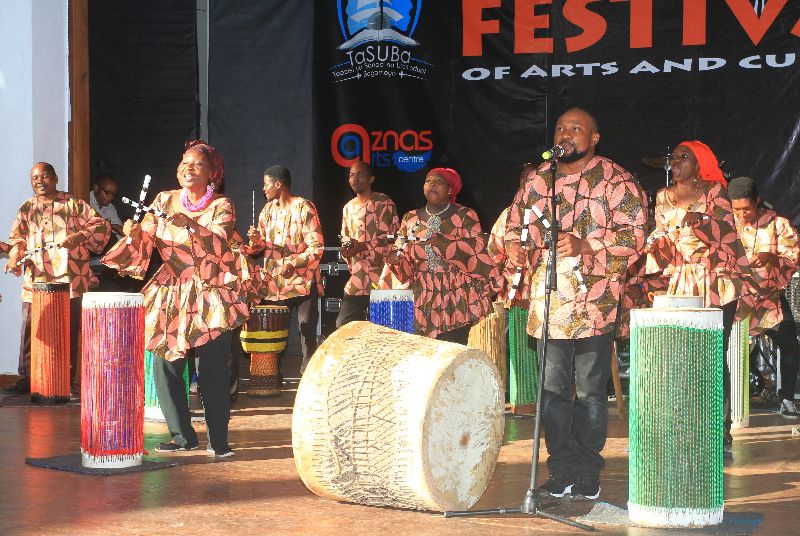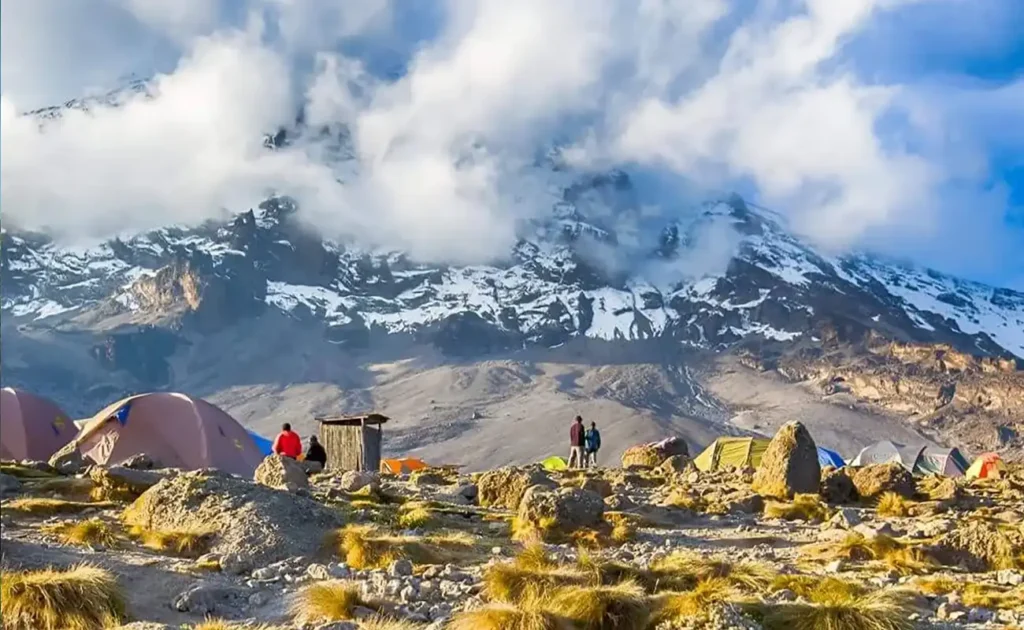Each year, Tanzania’s vibrant coastal town of Bagamoyo becomes a beacon of creativity, attracting artists from around the world to its renowned arts festival. This festival is not just a celebration but a vital convergence of Africa’s rich cultural heritage and contemporary artistic expressions. What started as a small local gathering has evolved into one of East Africa’s premier cultural events.
The Bagamoyo Arts Festival, which began in 1982, now attracts thousands of visitors annually, featuring performances, exhibitions, and workshops that highlight both traditional and modern art forms. The event plays an essential role in preserving Tanzania’s rich cultural traditions while fostering innovation in the arts. By bringing together diverse artistic talents, the festival contributes significantly to the cultural and economic development of the region.

Bagamoyo Arts Festival: An Overview
Bagamoyo, a historic town along Tanzania’s coast, hosts a renowned arts festival each year. People come from all over the world to experience the vibrant mix of music, dance, and art. According to this post, the festival started as a modest local event. Now, it’s a key highlight in East Africa’s cultural calendar. Visitors can explore traditional and modern art forms throughout the event.
The festival’s history dates back to the early 1980s. It was a small gathering meant to celebrate local talent initially. Over time, it evolved into an international event. Its growth is linked to the involvement of diverse artists sharing their distinct flair. Each artist contributes to the festival’s eclectic atmosphere.
Artists at the festival showcase different art forms, including music, paintings, and dance. Additionally, workshops and exhibitions offer visitors hands-on experiences. Performances often extend to late evening, creating a lively atmosphere. Talented performers captivate audiences with skillful displays. An array of events ensures something for everyone to enjoy.
Besides the arts, Bagamoyo itself is a cultural treasure. Its rich history and beautiful architecture attract numerous tourists each year. The town’s heritage makes it a fitting backdrop for the festival, enhancing its allure. Here is the article echoing this vibe well. The combination of history, art, and culture defines the Bagamoyo Arts Festival’s unique appeal.
Bagamoyo art festival showcases modern, legacy pieces
History and Evolution of Bagamoyo Arts Festival
The Bagamoyo Arts Festival began in 1982 with a simple goal: to celebrate local talent and culture. Initially, it was a small event featuring local performers. Over the years, the festival gained popularity. It started attracting artists and audiences from across Tanzania and beyond. Such growth made Bagamoyo a cultural hotspot.
Each year, new elements are added to keep the festival fresh and exciting. Traditional dance and music remain central to the event. However, modern art forms have slowly found their place.
| Year | Evolution |
|---|---|
| 1982 | Local Gathering |
| 1990s | Regional Recognition |
The diverse offerings connect different generations of audiences.
Backed by its rich history, the festival became a beacon for cultural exchange. Artists from various regions come to share and learn. This cross-cultural exchange enriches the festival experience. Many artists return each year, contributing to its dynamic vibe. Such collaborations foster creativity and innovation.
Bagamoyo itself contributes to the festival’s charm. Its coastal beauty and historic sites draw many visitors. This picturesque setting complements the vibrant arts showcased at the festival. The blend of old and new creates a unique atmosphere that few other events can match. It’s no wonder the festival continues to thrive and grow each year.
The Role of Bagamoyo Arts Festival in Preserving Tanzanian Culture
The Bagamoyo Arts Festival plays a vital role in preserving Tanzania’s diverse cultural heritage. By showcasing traditional music and dance, the festival keeps ancient customs alive. These performances invite younger generations to learn and appreciate their roots. Elders often pass down their knowledge during the festival, ensuring continuity. Such interactions foster a sense of pride in Tanzanian identity.
A variety of art forms like traditional crafts and storytelling feature prominently at the festival. These activities engage the community by highlighting age-old practices. Additionally, workshops teach younger attendees how to create traditional crafts. Participants can engage in hands-on sessions led by skilled artisans. This direct involvement helps keep cultural techniques relevant.
The festival also provides a platform for Tanzanian artists to express modern interpretations of their cultural background. Contemporary performances blend traditional elements with new ideas. This fusion helps maintain cultural relevance in an ever-changing world. Artists become cultural ambassadors, bringing global awareness to Tanzanian traditions. Through their art, they inspire others to value and respect their heritage.
Moreover, the festival fosters unity among diverse Tanzanian communities. People from various tribes and regions come together to celebrate shared values.
- Shared Music and Dance
- Common Customs
- Joint Artistic Creations
These gatherings strengthen social bonds and enhance cultural understanding. By encouraging inclusivity, the Bagamoyo Arts Festival plays a crucial part in preserving Tanzania’s rich cultural tapestry.
Contemporary Art Forms in Bagamoyo Arts Festival
The Bagamoyo Arts Festival is a haven for contemporary artists, pushing the limits of traditional expression. Modern dance performances are a prominent feature, blending classical movements with innovative choreography. These dances often tell stories that resonate with both local and international audiences. Music at the festival also includes modern genres like hip-hop and jazz. This mix attracts a diverse crowd eager to experience new sounds.
Visual art is another significant element of the festival. Artists display pieces that reflect both current issues and timeless themes. Visitors can explore a variety of mediums including paintings, sculptures, and digital art. Exhibitions showcase the talent of local artists and provide a platform for emerging voices. Many pieces incorporate traditional motifs in new and exciting ways.
Performance art has also found its place at the Bagamoyo Arts Festival. These acts often blend multiple art forms, creating an immersive experience for viewers. Some performances include live painting, music, and theatrical elements. This combination captivates audiences and brings a dynamic energy to the festival. These creative acts encourage spectators to think differently about art.
Workshops are another key feature, offering hands-on experiences with contemporary art forms. Participants can learn new techniques from skilled artists.
- Photography
- Digital Illustration
- Modern Dance
These workshops not only educate but also inspire future artists. Engaging directly with contemporary art methods broadens perspectives and skills.
Fashion design also shines brightly at the festival. Designers showcase modern styles that pay homage to traditional Tanzanian fashion. This includes incorporating local fabrics and motifs into contemporary clothing. Fashion shows at the festival are vibrant and draw significant attention. They emphasize the importance of cultural preservation through modern design.
Film screenings are another highlight, featuring both short films and documentaries. These films often tackle contemporary social issues and explore Tanzanian culture in a modern context. They provide a platform for filmmakers to share their stories and ideas. The screenings invite dialogue and reflection, enriching the festival’s overall experience. This blend of visual storytelling adds depth and perspective to the arts festival.
Global Influence and Impact of Bagamoyo Arts Festival
The Bagamoyo Arts Festival serves as a bridge connecting Tanzanian culture with the world. By hosting international artists, it fosters cultural exchange and mutual understanding. Visitors from various countries participate, bringing their own cultural influences. Such interactions broaden perspectives and enrich the festival experience. The event thus acts as a melting pot of global cultures.
Artists who showcase their work at the festival often gain international recognition. This exposure helps elevate their careers and opens doors to new opportunities. Many artists have used this platform to collaborate on global projects. These collaborations inspire creativity and innovation, spreading Bagamoyo’s influence beyond Tanzania. The festival is a stepping stone for artists looking to expand their reach.
In the realm of music, the festival’s impact is notable. Traditional Tanzanian beats mix with global rhythms, creating unique sounds. This fusion attracts music enthusiasts and promotes Tanzanian music on the world stage. Artists often take this opportunity to incorporate international styles into their work. The result is a diverse musical landscape that attracts a global audience.
Beyond art and music, the festival contributes to the local economy. By attracting tourists from around the world, it boosts local businesses. Hotels, restaurants, and markets see a rise in patronage during the festival period. This economic activity benefits the community and fosters growth. Such advantages underline the festival’s importance beyond cultural exchange.
Educational programs during the festival also have a far-reaching impact. International workshops allow participants to learn new skills and techniques. These sessions are often led by experts from different countries.
- Cultural Discussions
- Art Technique Workshops
- Musical Collaborations
Such learning opportunities enhance the festival’s educational value.
Finally, the festival helps put Bagamoyo on the global tourism map. Its reputation as a cultural hub attracts people eager to learn and explore. The scenic locale, coupled with the festival appeal, makes Bagamoyo a must-visit destination. This global recognition elevates Tanzania’s profile as a vibrant cultural epicenter. The Bagamoyo Arts Festival, therefore, serves as an ambassador of Tanzanian culture worldwide.

Frequently Asked Questions
Bagamoyo Arts Festival is a vibrant celebration of Tanzania’s rich cultural heritage. Explore these common questions to learn more about its impact and significance.
1. How does the Bagamoyo Arts Festival help local artists?
The Bagamoyo Arts Festival offers local artists a significant platform to showcase their talents. By presenting their work to both local and international audiences, artists gain exposure and opportunities for collaboration. The festival also encourages artists to experiment with new forms and ideas, enriching their artistic expression.
Moreover, workshops and networking events during the festival enable artists to learn from others and exchange techniques. This supportive environment fosters growth and development, nurturing the next generation of Tanzanian artists. Access to such a diverse audience and art community helps them build and sustain their careers.
2. What types of performances can visitors expect at the festival?
Visitors to the Bagamoyo Arts Festival can enjoy a wide array of performances spanning music, dance, and theater. Traditional Tanzanian artists showcase age-old customs through vibrant performances, keeping cultural heritage alive. This diverse range of performances underscores the festival’s dedication to cultural preservation and contemporary creativity.
In addition to traditional acts, contemporary art forms such as modern dance and fusion music are included. These performances blend global influences with local themes, creating unique experiences for audiences. The festival’s varied lineup ensures that there’s something to capture the interest of every visitor.
3. How does the festival contribute to Tanzania’s economy?
The Bagamoyo Arts Festival plays a crucial role in boosting Tanzania’s economy through increased tourism and local spending. The influx of visitors supports local businesses, such as hotels, restaurants, and artisans, generating revenue and employment. The festival creates a ripple effect, benefiting both the arts community and the local economy in Bagamoyo.
Moreover, the publicity generated by the festival enhances Tanzania’s reputation as a cultural destination. This encourages more tourists to explore the region, further stimulating economic growth. The festival’s economic impact extends beyond its duration, promoting long-term development in the area.
4. How do international artists benefit from participating in the festival?
International artists attending the Bagamoyo Arts Festival gain valuable cultural insights and networking opportunities. Engaging with Tanzanian artists and audiences provides them with a unique perspective on different artistic traditions. This exposure broadens their creative horizons and adds depth to their work.
Additionally, the festival serves as a platform to showcase diverse art forms and develop cross-cultural collaborations. These collaborations can lead to new projects or ideas, enhancing their artistic repertoire. By participating in the festival, international artists can grow and expand their influence within the global art community.
5. What are the educational aspects of the Bagamoyo Arts Festival?
The festival includes various educational elements, such as workshops, discussions, and panels. These sessions allow participants to learn new skills and gain insights from experienced professionals. Topics covered include different art techniques, cultural heritage, and contemporary artistic trends.
Educational activities at the festival equip young artists with the knowledge and skills to advance their careers. By engaging in interactive learning experiences, attendees can apply new techniques and broaden their artistic perspectives. This focus on education ensures the continued development and preservation of Tanzanian culture.
36th Bagamoyo Festival of arts and Culture
Conclusion
The Bagamoyo Arts Festival stands as a cornerstone of cultural preservation and contemporary artistic expression in Tanzania. It unites local and international artists, fostering creativity and exchange. By celebrating diverse art forms, it enriches both the cultural landscape and the local economy.
This festival not only honors Tanzania’s heritage but also promotes global cultural engagement. Its impact is far-reaching, benefiting artists, the community, and visitors alike. The Bagamoyo Arts Festival truly epitomizes the spirit of art and culture in Tanzania.



